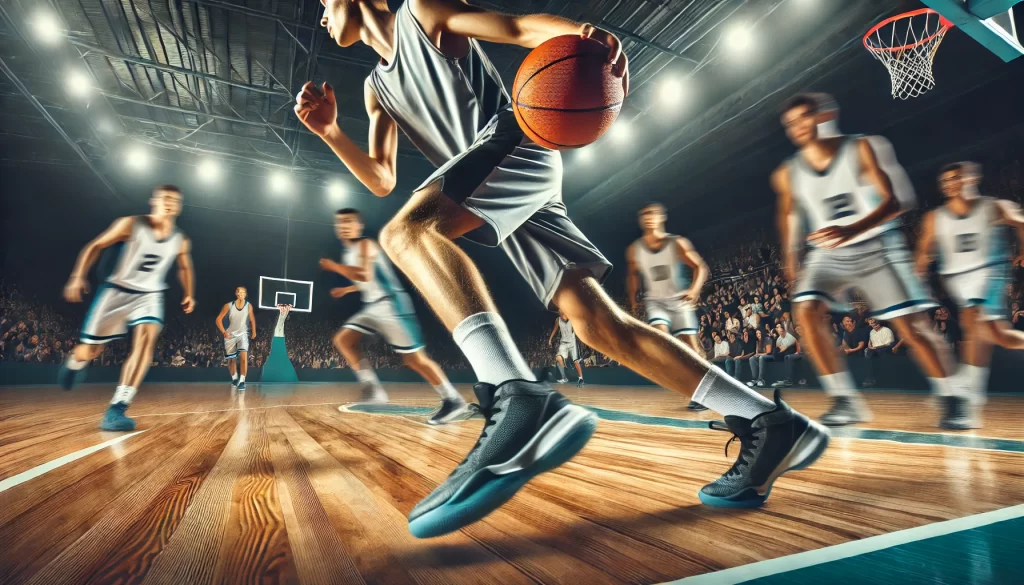Table of Contents
Basketball is a fast-paced and exciting sport, but it comes with its own set of rules that every player and fan needs to understand. One of the most common violations in basketball is traveling, yet it is also one of the most misunderstood. What Is a Travel in Basketball? It’s a violation that occurs when a player holding the ball moves one or both feet illegally. This happens when the player takes too many steps without dribbling, pivots incorrectly, or fails to establish a proper pivot foot. In this article, we’ll break down the concept of traveling, explain the rules, and highlight some shocking facts you may not know. By the end of this article, you’ll have a clear understanding of what travel in basketball is and how to avoid it.
What Is a Travel in Basketball?

Basic Definition of Traveling
In simple terms, What Is a Travel in Basketball occurs when a player holding the ball moves one or both of their feet illegally. The rules around traveling are designed to ensure that players don’t gain an unfair advantage by moving without dribbling the ball.
The Importance of Dribbling
Dribbling is the act of bouncing the ball continuously with one hand while moving around the court. The rules of basketball require that players dribble the ball if they want to move with it. Traveling occurs when a player stops dribbling but continues to move their feet.
The Traveling Rule
According to the official rules, What Is a Travel in Basketball is called when a player holding the ball moves their pivot foot illegally. The pivot foot must remain in contact with the floor while the other foot can rotate or move around.
Common Scenarios of Traveling
- Taking too many steps without dribbling: This is the most basic form of traveling. If a player takes more than two steps without dribbling, they violate the traveling rule.
- Switching the pivot foot: Once a player establishes a pivot foot, they cannot switch it to the other foot without dribbling.
- Lifting the pivot foot before dribbling: If a player lifts their pivot foot before they start dribbling, it’s considered a travel.
Shocking Rules and Exceptions

The Euro Step: Is It Traveling?
One of the most controversial moves in modern basketball is the Euro Step. This move involves a player taking two steps in different directions while driving toward the basket. While it could be a travel, it’s actually legal.
Why the Euro Step Is Legal
The Euro Step is legal because the player takes only two steps after picking up the ball. As long as the player doesn’t drag their pivot foot or take more than two steps, the move is within the rules.
Gather Step: A New Addition to the Rules
A newer concept in the NBA is the “gather step,” which has caused some confusion among fans and players alike.
Understanding the Gather Step
The gathering step allows a player to take a step while gathering the ball before taking the two steps allowed for a layup or dunk. This rule change has led to debates about whether it’s making the game more dynamic or just more confusing.
The Double Dribble: Related but Different
While often confused with traveling, a double dribble is a separate violation.
What Constitutes a Double Dribble?
A double dribble occurs when a player stops dribbling the ball and then starts dribbling again without passing or shooting. It can also happen if a player uses both hands to dribble simultaneously. Though related to movement with the ball, it is distinct from traveling.
How to Avoid Traveling in Basketball
Mastering the Pivot Foot
To avoid traveling, it’s crucial to understand how to use the pivot foot properly.
Establishing the Pivot Foot
When you stop dribbling, you must establish one foot as your pivot foot. This foot can remain planted while you move your other foot to change direction or position. Practicing this will help you avoid accidental traveling.
Dribbling Techniques to Keep in Mind
Effective dribbling is key to preventing traveling violations.
Keep Your Dribble Alive
To prevent traveling, always keep your dribble alive until you’re ready to pass or shoot. This way, you have the flexibility to move around the court without worrying about your pivot foot.
Practice Makes Perfect
Practicing your dribbling skills and footwork will help you move confidently on the court without committing travel. Focus on exercises that improve your balance, agility, and ball-handling.
Awareness and Reaction Time
Being aware of your movements on the court and having quick reaction times can also help you avoid traveling.
Stay Focused on the Court
Maintaining focus during the game helps you stay aware of where your feet are and how you’re moving. This awareness can prevent you from accidentally moving your pivot foot or taking too many steps.
Also Read: How Much Does a Boat Cost? Shocking Truth About Prices!
How to Improve Your Footwork to Avoid Traveling in Basketball

Importance of Footwork in Basketball
Footwork is crucial for basketball players, as it directly impacts your ability to move around the court without violating the traveling rule. Whether you’re on offense or defense, mastering your footwork helps maintain control over your movement, allowing you to pivot, pass, and shoot effectively while keeping your pivot foot planted. Strong footwork also enhances your agility, balance, and overall game awareness, reducing the likelihood of committing a travel violation.
Basic Footwork Drills
One of the best ways to avoid traveling is to practice basic footwork drills. Drills such as jump stops, pivots, and defensive slides help players become more comfortable with their movements on the court. By incorporating these exercises into your regular training routine, you can build muscle memory and make fewer mistakes during the game.
Advanced Techniques to Master
Once you’ve mastered basic footwork, you can move on to advanced techniques like the Euro Step and spin moves. While these moves can seem risky, practicing them with correct form will ensure that you stay within the bounds of the traveling rules. The key is to keep your movements controlled and avoid dragging your pivot foot.
The Consequences of Traveling
How Traveling Impacts the Game
Traveling can disrupt the flow of the game and often leads to a turnover, giving the opposing team possession of the ball.
Loss of Possession
When travel is called, the team that committed the violation loses possession of the ball. This can be a significant disadvantage, especially in close games.
Impact on Player Confidence
Repeated traveling violations can also affect a player’s confidence.
Mental Focus
Understanding the rules and practicing proper footwork can help maintain a player’s confidence and mental focus during the game. By avoiding unnecessary turnovers, players can contribute more effectively to their team’s success.
What Is a Travel in Basketball? It’s a fundamental rule that all players need to understand and master. From the basics of dribbling and pivoting to the more complex aspects like the Euro Step and gather step, knowing how to avoid traveling is essential for anyone serious about the game.
Whether you’re a seasoned player or just starting, taking the time to understand What Is a Travel in Basketball and practice the rules around traveling will make you a better, more confident basketball player. Stay aware, stay focused, and keep dribbling to ensure you never get caught traveling on the court!

